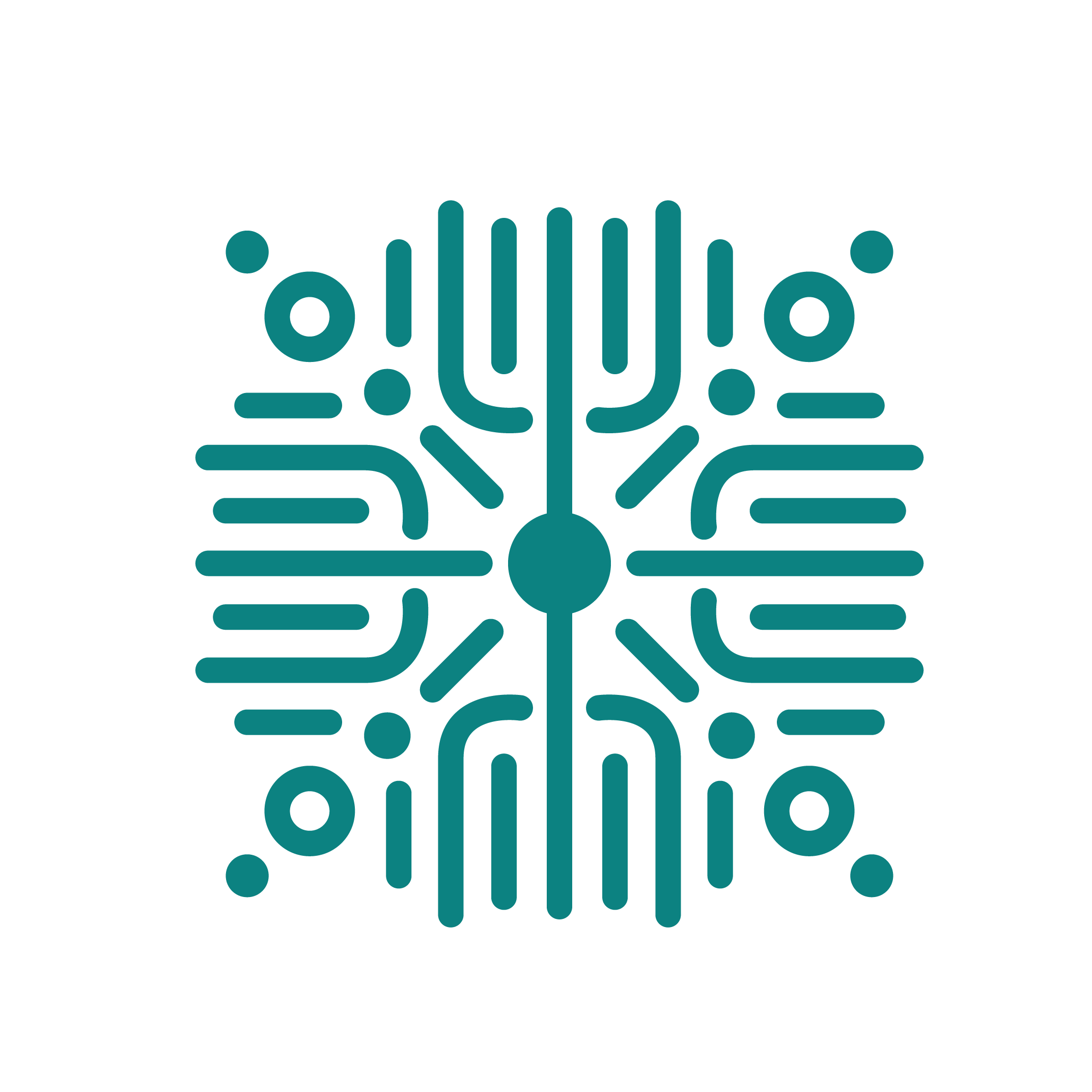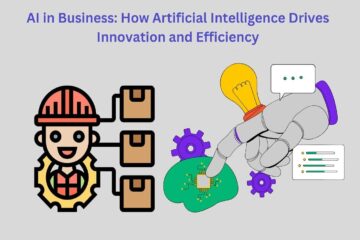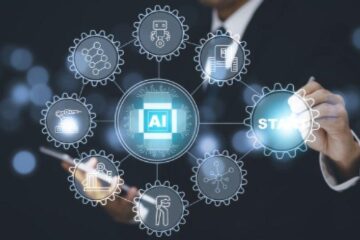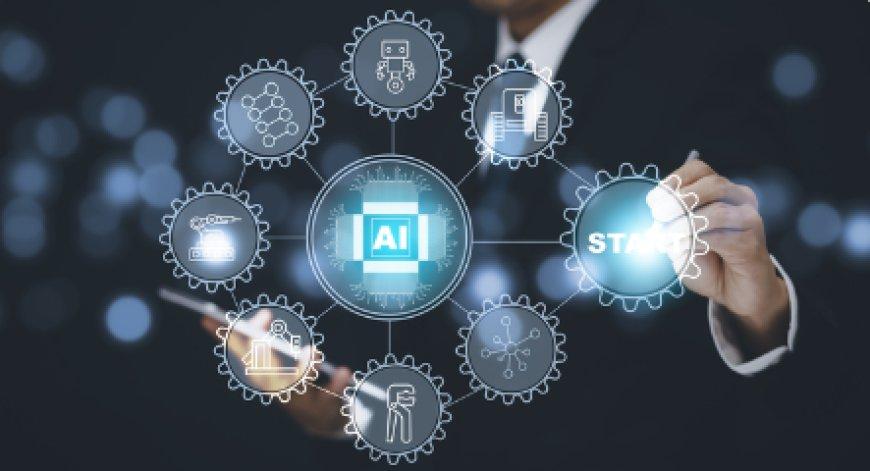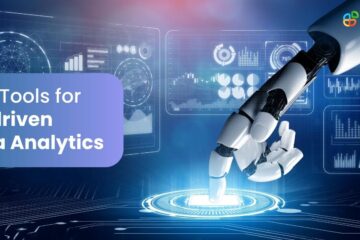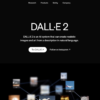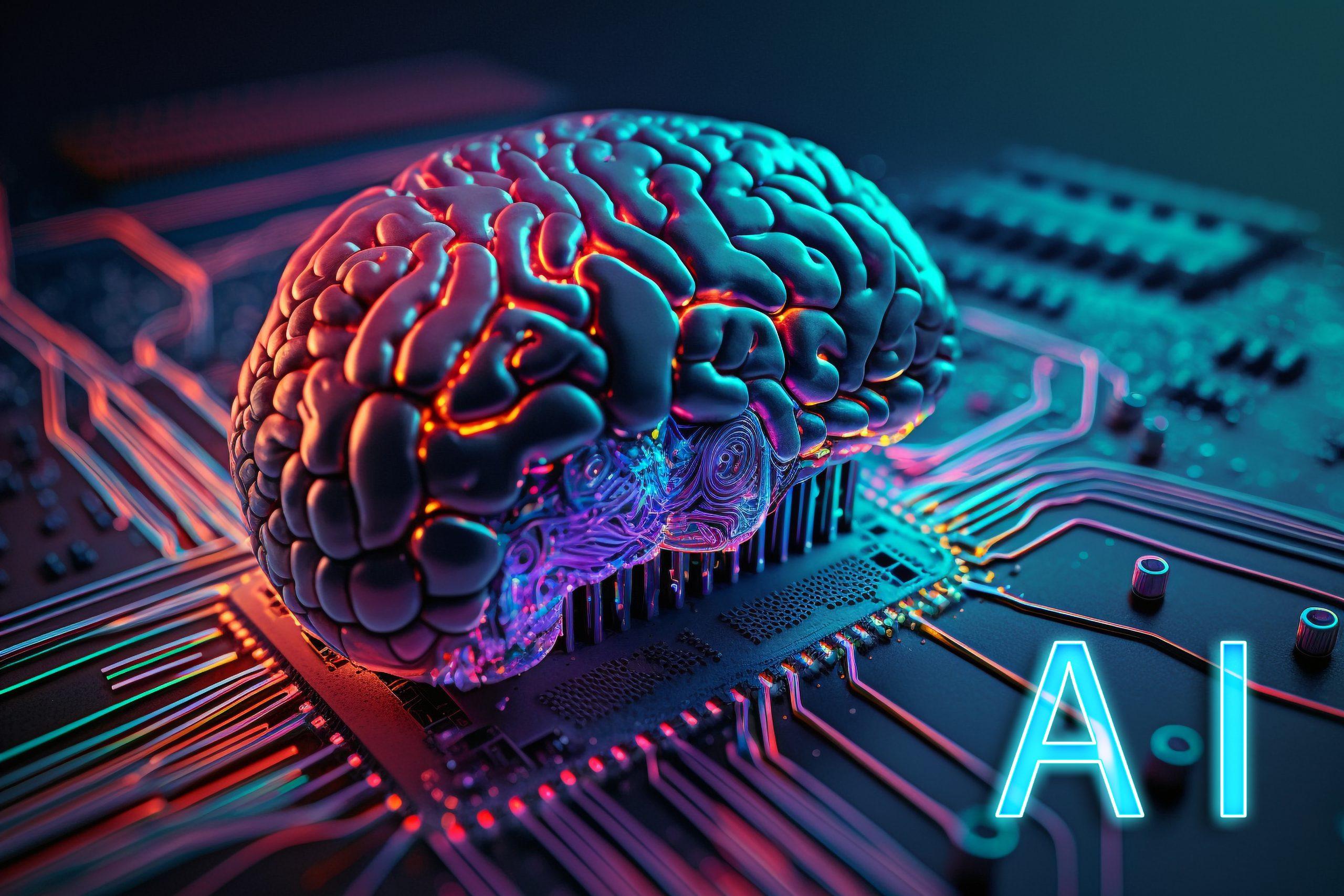
AI for user experience
in a world where digital experiences shape our daily lives, the demand for seamless, intuitive interactions has never been higher. Enter AI for user experience — the game-changing fusion of artificial intelligence and cutting-edge design principles. from personalized recommendations to predictive interfaces, AI is redefining how we engage wiht technology, creating experiences that feel smarter, faster, and more human. But how does this innovation work, and what does it mean for businesses and users alike? In this article, we’ll explore how AI is revolutionizing user experience, the opportunities it unlocks, and the challenges it poses. Whether you’re a designer, a developer, or simply a curious tech enthusiast, this is your guide to understanding why AI isn’t just enhancing UX—it’s transforming it entirely.
Table of Contents
- Heading List:
- Introduction to AI for User Experience
- How AI for User Experience Is Redefining Digital Interactions
- Best Practices for implementing AI for User Experience
- Enhancing Personalization with AI for User Experience
- The Role of machine Learning in AI for User Experience
- Benefits of AI for User Experience in Business Strategies
- Challenges and Ethical Considerations in AI for User Experience
- Future Trends in AI for User Experience
- Conclusion: Unlocking Potential with AI for User Experience
- The way Forward
Heading List:
Understanding user behavior is crucial for crafting seamless experiences, and artificial intelligence provides the tools necessary to gain that insight. By harnessing the power of AI, businesses can analyze user interactions on a granular level, enabling them to predict needs and personalize offerings. This process frequently enough involves a variety of methodologies that contribute to a comprehensive user experience strategy. Some key approaches include:
- Behavioral Analytics: Utilizing AI to track and interpret user actions, leading to informed decisions about UX improvements.
- Personalization Engines: Tailoring content in real-time based on user data, enhancing engagement and satisfaction.
- Feedback analysis: leveraging natural language processing to gauge user sentiment from reviews and surveys, providing actionable insights.
Moreover, the integration of AI can streamline user interface designs, making them more intuitive and accessible. By employing machine learning algorithms, designers can automate routine tasks, allowing for greater focus on creativity and innovation.To understand this dynamic further, consider the following table that highlights recent statistics on AI-driven user experience improvements:
| Improvement Area | % Increase with AI |
|---|---|
| Customer Engagement | 35% |
| Conversion Rates | 25% |
| User Retention | 30% |
As we explore the overlap between AI and user experience further, it’s enlightening to reference authoritative studies, such as the findings outlined by McKinsey on AI’s impact across industries. Additionally, for those interested in diving deeper into integration strategies, check out our recent post on Optimizing Your UX Strategies with Technology. Together, these resources underscore the transformative potential that AI holds for enhancing user experiences, setting the stage for innovative applications in the near future.
Introduction to AI for User Experience
Harnessing the power of AI transforms user experience (UX) design into an clever and dynamic process. By integrating AI technologies, designers can analyze user behavior and preferences in real-time, leading to highly personalized interactions that resonate with individual needs. This evolution not only enhances the overall user journey but also leverages data-driven insights to inform design decisions, making them more strategic and impactful.
As organizations embrace this revolution, several key benefits of AI in UX emerge:
- Personalization: AI algorithms can tailor content and interfaces to suit user preferences, fostering deeper connections.
- Efficiency: Automating mundane tasks frees designers to focus on creativity and innovation.
- Predictive Analytics: Understanding user patterns allows for proactive adjustments in design and functionality.
- Accessibility: AI tools can facilitate a more inclusive user experience by tailoring services to diverse user needs.
| AI Technology | Benefit | Example Usage |
|---|---|---|
| Machine Learning | Pattern Recognition | Customizing user interfaces based on prior interactions |
| Natural Language Processing | Enhanced Dialogue | Chatbots for real-time customer support |
Integrating AI into UX design is not just about technology—it’s about creating a better understanding of user behavior and anticipating their needs. For further exploration, consult resources like Forbes or delve into our posts on recent trends in UX design. Such insights are crucial for any UX professional looking to stay ahead in an ever-evolving landscape.
How AI for User Experience Is Redefining Digital Interactions
As companies increasingly leverage artificial intelligence, digital interactions are undergoing a important transformation, enhancing user experience in ways previously thought impractical. This shift is not just about processing data but about understanding and anticipating user needs, tailoring interactions to create more engaging and meaningful experiences. By integrating machine learning and natural language processing, businesses can now offer personalized recommendations, streamline user interfaces, and create dynamic content that resonates on an individual level.
One of the most compelling aspects of AI in user experience is its ability to analyze user behavior in real-time, allowing organizations to adapt their digital environments instantly. The following elements exemplify this transformative potential:
- Predictive Analytics: Using historical data to forecast user actions leads to more intuitive workflows.
- Chatbots and Virtual Assistants: These AI-driven tools provide 24/7 support and can assist users by answering queries with unprecedented accuracy.
- Personalized Content Delivery: AI curates content based on user preferences, making interactions more relevant and engaging.
| AI Applications | Impact on User Experience |
|---|---|
| Personalization Algorithms | Tailored recommendations enhance user satisfaction by showcasing relevant products. |
| Sentiment Analysis | Understanding user emotions helps in adjusting content and communication strategies in real-time. |
| Voice Recognition | Voice-activated technology simplifies user interactions and increases accessibility. |
for more insights into how businesses are embracing these innovations, check out our recent post on Trends in AI for User engagement. Additionally, to understand the ethical considerations surrounding AI technology, refer to our discussion on AI and Ethics.
Best Practices for Implementing AI for User Experience
Effective implementation of AI for enhancing user experience requires a strategic approach that aligns with both user needs and organizational goals. By prioritizing data privacy and security, organizations can foster trust while leveraging AI’s capabilities. understanding user behavior through data analytics becomes paramount, as it enables the creation of personalized experiences that resonate with users on a deeper level. Additionally, integrating user feedback into the advancement cycle ensures that AI solutions remain adaptable and relevant.
To successfully adopt AI technologies, consider the following best practices:
- establish Clear Objectives: Define what success looks like for your AI initiatives, whether it’s improving customer satisfaction or increasing engagement rates.
- Prioritize User-Centric Design: AI should enhance, not replace, the human element in user interactions. Each feature must add tangible value to the user journey.
- Invest in training: Ensure your team understands both AI technology and user experience principles to effectively merge the two.
- Implement Gradually: Start with small pilots to test AI features with real users and iterate based on feedback.
| Practise | Description |
|---|---|
| Data Privacy | Implement robust measures to protect user data, ensuring compliance with regulations like GDPR. |
| User Feedback Loop | Regularly collect and analyze user feedback to refine AI features and enhance satisfaction. |
| Cross-Department collaboration | Encourage collaboration between UX designers, data scientists, and marketing teams for a holistic approach. |
As you delve deeper into these practices, consider reading this insightful piece on AI and user experience to gain further perspectives. Additionally, exploring our recent post on Artificial Intelligence in Design will provide you with innovative strategies to enhance your project outcomes.
Enhancing Personalization with AI for User Experience
AI has revolutionized how we approach personalization in user experience, allowing businesses to tailor interactions based on individual needs and preferences. By analyzing vast amounts of data, AI-driven solutions can discern patterns and make recommendations that enhance engagement and satisfaction. This fosters a more dynamic relationship between users and brands, where experiences are not only relevant but also anticipatory.
To deepen the level of personalization, companies are now harnessing techniques such as:
- Predictive Analytics: Leveraging user behavior to predict future actions, thereby providing tailored suggestions.
- Sentiment Analysis: Understanding user emotions through feedback and sentiment data, allowing for more empathetic responses.
- Adaptive Interfaces: Customizable designs that evolve based on user interactions,enhancing user satisfaction.
Table 1: Key AI Technologies Enhancing Personalization
| Technology | Function | Benefit |
|---|---|---|
| Machine Learning | Data analysis & predictions | Improves user recommendations |
| Natural Language Processing | User intent interpretation | Enhances interactive experiences |
| Chatbots | 24/7 customer interaction | Immediate support & personalization |
Integrating these technologies fosters a unique prospect for businesses to engage users more meaningfully and build lasting relationships. As an example, personalized marketing campaigns that adapt based on user feedback have shown higher conversion rates and improved customer loyalty. As brands continue to embrace AI,they not only have the potential to improve their bottom line but also to considerably enhance the overall user experience. For further reading on AI’s potential in personalization, visit Forbes or explore our post on recent AI advancements in customer engagement.
The Role of Machine Learning in AI for User Experience
Machine learning acts as the backbone of modern AI systems,enhancing user experience by personalizing content and automating interactions. By analyzing vast amounts of user data, machine learning models can discern patterns that inform everything from product recommendations to customer service interactions. This capability not only streamlines user journeys but also fosters a more engaging and intuitive interface for all users.
As organizations continue to integrate machine learning into their user experience (UX) strategies, several key benefits emerge, including:
- Personalization: Algorithms tailor experiences based on user behavior and preferences, ensuring content is relevant and engaging.
- Predictive Analysis: Anticipating user needs by predicting what they may want or need next enhances satisfaction and retention.
- Automated Insights: Machine learning can provide insights on user interactions, allowing businesses to fine-tune their services swiftly and effectively.
| Machine Learning Applications | Impact on User Experience |
|---|---|
| Advice Systems | Increased user engagement and conversion rates. |
| Chatbots | Improved customer support and response times. |
| Dynamic Pricing | Enhanced customer satisfaction and loyalty through tailored offers. |
Further advancements in machine learning will likely lead to even more sophisticated user experience enhancements. A robust understanding of user interactions allows for the continuous refinement of products and services, ensuring that businesses not only meet but exceed customer expectations. For additional insights on how AI continues to shape UX, read our recent post on The Future of UX and AI. Additionally, explore the impact of AI in different sectors through our piece on AI as a Business Problem Solver.
Benefits of AI for User Experience in Business Strategies
Leveraging AI to enhance user experience is not just a trend; it’s a strategic move that businesses are adopting for sustainable growth. Integrating AI into business strategies can fundamentally shift the way organizations interact with their customers by providing personalized, efficient, and intuitive experiences. This synergy leads to increased customer satisfaction and long-term loyalty, as users feel more valued and understood.
Some of the key benefits of incorporating AI into user experience strategies include:
- Personalization: AI can analyze vast amounts of data to tailor experiences uniquely suited to individual users, thereby enhancing engagement.
- Predictive Analytics: By utilizing historical user data, businesses can anticipate customer needs and behaviors, allowing for proactive service delivery.
- Automation: AI-powered tools can streamline routine tasks, freeing up resources for teams to focus on strategic initiatives rather than mundane activities.
- Real-time assistance: Chatbots and virtual assistants offer immediate support, answering queries and resolving issues, which improves overall user satisfaction.
| AI Implementation Method | Expected Outcome |
|---|---|
| Chatbots for Customer Support | Increased response speed and 24/7 availability |
| Data analysis for Personalization | Higher engagement rates and conversion |
| Predictive Maintenance in product Use | Reduced downtime and improved user satisfaction |
Moreover, the integration of AI not only enhances the user experience but also drives significant business efficiencies. As organizations adopt these advanced technologies, they position themselves at the forefront of innovation, ensuring they can effortlessly adapt to changing market demands. For further insights on optimizing digital interactions, check out our recent post on Improving User Interface Design or explore the role of Strategies for AI in Business.
Challenges and ethical Considerations in AI for User Experience
The integration of AI in shaping user experiences brings about significant challenges and ethical considerations that require careful navigation. As designers and technologists seek to leverage AI’s capabilities, they must confront dilemmas related to user privacy, data security, and algorithmic bias. Understanding these challenges is critical to fostering trust and ensuring that AI solutions genuinely enhance user experiences rather than detract from them.
One of the foremost concerns revolves around user privacy.Advanced AI systems often rely on extensive data collection to personalize experiences, raising questions about who benefits from this data and how it is utilized. Balancing the need for personalized services with the protection of individual privacy rights is paramount. Moreover,the potential for algorithmic bias is another critical issue. Algorithms trained on biased data can lead to unfair treatment or exclusion of specific user groups, undermining the very purpose of a user-centered design. Addressing these issues requires ongoing monitoring and adaptation of AI systems, with a commitment to clarity and inclusivity. Some key challenges include:
- Ensuring data is collected ethically and with user consent.
- Regularly auditing AI algorithms for biases and inaccuracies.
- Developing clear policies for data security and user privacy.
| Challenge | impact | Recommendations |
|---|---|---|
| User Privacy | loss of trust among users | Implement transparency measures |
| Algorithmic Bias | Exclusion of diverse user groups | Conduct regular bias assessments |
To deepen your understanding of these ethical frameworks, resources such as the Brookings Institution provide valuable insights. Incorporating ethical considerations into AI development aligns with broader trends in technology governance and can position organizations as leaders in responsible innovation. For related discussions, check out our recent posts on designing with empathy and privacy-first UX strategies.
Future Trends in AI for User Experience
As artificial intelligence continues to evolve, its impact on user experience is set to deepen, ushering in a new era of personalization and interactivity. The future will see AI technologies transcending their current capabilities, enabling more intuitive interfaces and seamless user journeys. Anticipating these trends, organizations must embrace innovations that not only enhance usability but also foster emotional connections with users.
Among the transformative advancements on the horizon are:
- Hyper-Personalization: Leveraging AI to analyze vast amounts of user data, companies will tailor products and services uniquely for each individual, resulting in more relevant experiences.
- Conversational Interfaces: The integration of advanced voice and chat interfaces will reshape interactions, allowing users to engage in natural language rather than clicking through menus.
- Predictive Analytics: by anticipating user needs and behaviors, AI can enhance decision-making processes, guiding users toward actions that align with their preferences.
- Emotional AI: Systems that recognize and respond to user emotions will create empathetic interactions, making digital experiences feel more human-centric.
| Trend | Impact on User experience |
|---|---|
| Hyper-Personalization | Increased relevance and engagement |
| Conversational Interfaces | Simplified, natural interactions |
| predictive Analytics | Enhanced decision-making support |
| Emotional AI | More empathetic user experiences |
As we navigate these exciting developments, staying informed about industry shifts through resources like Forbes and engaging with other insightful discussions on recent posts will be crucial. By keeping a pulse on emerging trends, businesses can effectively strategize to harness AI’s full potential, ultimately driving a more enriching user experience.
Conclusion: unlocking Potential with AI for User Experience
the integration of AI into user experience is not merely a trend; it represents a fundamental shift in how businesses interact with their customers. By harnessing the power of AI, organizations can deliver personalized experiences that cater to individual preferences and needs. This opens up a realm of possibilities where user engagement is not just increased, but transformed entirely. With tools that analyze behavior patterns and predict user actions, businesses can create seamless interfaces that resonate with their audience.
To truly unlock potential, companies must invest in understanding how AI can enhance various aspects of user experience, including:
- Personalization: Using AI algorithms to create tailor-made recommendations.
- Predictive Analytics: Anticipating user needs before they arise.
- Intelligent Assistance: Implementing chatbots and virtual assistants for real-time support.
Ultimately,the future of user experience lies in AI’s ability to process vast amounts of data and derive actionable insights. Leveraging these technologies will not only increase satisfaction but also improve loyalty and retention. For more insights on effectively deploying AI in user interfaces, check out this article on Forbes and our recent post on Recent Trends in AI.
| AI Applications | Impact on User Experience |
|---|---|
| Chatbots | 24/7 Availability |
| Recommendation Engines | Higher Conversion Rates |
| User Behavior Mapping | enhanced personalization |
The Way Forward
As we navigate the unfolding narrative of technology in human interaction, AI emerges not as a replacement for genuine connection, but as a bridge to more intuitive, seamless, and inclusive experiences. Its potential to enhance user experience is both vast and evolving, promising tools that adapt, learn, and anticipate in ways that reflect our own creativity and curiosity. Yet, as we embrace this future, the responsibility remains ours to shape AI with intention—ensuring it serves not only functionality but also humanity. Because at its core, the essence of user experience has always been about one thing: understanding people. And with AI at our side, the possibilities are as boundless as our inventiveness. The journey has only just begun.
